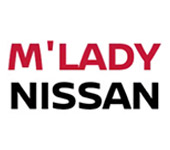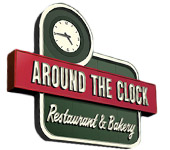A Brief History
According to OOH trade organization Outdoor Advertising Association of America (OAAA), OOH has a storied history that can be traced to obelisks in Egypt, but also includes circus posters in the 19th century and a holiday campaign from Coca-Cola in the early 20th century that gave rise to our modern interpretation of Santa.
Insiders now say these once static assets are undergoing profound change, which means OOH is poised to thrive in an era of data, analytics, and micro-moments. In fact, according to OAAA, OOH revenue was up 4.6% in 2015 from the previous year for a total of $7.3 billion, which marks an all-time high after 23 quarters of growth.
Miko Rahming, senior vice president of innovation and creative at media and tech company Intersection, went as far as calling the evolution underway a “renaissance.”
“The physical world is becoming more and more connected, and as digital screens, mobile devices, free high-speed Wi-Fi, proximity networks, and so on continue to become ubiquitous, your journey through the world will become more and more like a web browsing experience, with access to information and opportunity based on time, place, and contextual data,” Rahming told CMO.com. “Just like the virtual online experience, this means brands will find incredible new ways to engage the public in meaningful ways.”
‘Renaissance’ At Play
Here’s a closer look at how experts told us this so-called renaissance is playing out–and why the seemingly underappreciated OOH sector is more relevant than ever.
1. Until teleportation is an option, consumers will go outside: Unlike mediums like TV, radio, and newspapers, which have seen drastic changes in consumption, OOH will endure because consumers–unless they have reality-show-caliber phobias–are never going to stay home 24 hours a day, said Jeff Tan, vice president of strategy at OOH communications agency Posterscope, in an interview with CMO.com.
“We are creatures of habit. We drive down the same highways, we take the same trains, and we pass the same billboards,” Tan said.
2. Consumers can try to ignore billboards, but they’re always there: OOH is the only medium consumers have to interact with as soon as they go outdoors, said Arthur Ceria, CEO of digital marketing and media relations firm CreativeFeed.
“There is a choice about whether or not to check your phone, go online, or hop on social media, but an OOH ad will just be there–displayed next to you at a bus stop [or] on a billboard while you wait for the traffic light to change,” Ceria said.
3. Billboards and digital/social/mobile are better together: New media channels don’t tend to replace older ones, but, rather, they find “a happy form of co-existence,” said Mark Mulhern, president of the East region at digital marketing agency iCrossing.
Indeed, the integration of data and technology means advertisers can tap into OOH like never before. “And it’s really shifting into bringing back the things that digital has kind of lost–the sensory experiences, feelings, and interactions,” Ceria added.
And with the rise of connected and driverless cars, expect to see much more interaction between physical outdoor assets and mobile devices. In fact, said Dan Hight, senior vice president of channel partnerships at mobile location platform xAd, marketers can extend the reach of OOH placements by geofencing place-based ads and delivering display ads on mobile phones when consumers are in proximity to a given billboard.
“We call it the ‘priming effect’–the power of the billboard plus a mobile ad [yields] higher performance of the ad than a mobile ad alone, and being able to have an ad that is reinforced by mobile is producing higher results than the industry average,” Hight say.








